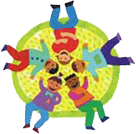A Paradigm Shift: Remote Learning Drives Positive Behavior Changes in Clients with Developmental Disabilities
The COVID crisis has forced everyone to modify their way of life, for better or for worse. To my surprise I have seen unexpected changes in my clients’ behaviors during their remote learning sessions. Think of a student, who does not have any means of communication to express their feelings, thoughts, or distress about the imposed COVID restrictions in their already constrained life. One would think that their quality of life would be further diminished , resulting in new and intensive frustrations leading to increased maladaptive behaviors. The pandemic has been difficult for a lot of clients and their families to manage the “new normal” of online schooling.
Fortunately, that’s not what I’ve noticed. I have been seeing significant strides in a portion of my clients. Despite their range of developmental disabilities, they are showing a positive shift in their behavior as well as their learning.
Prior to COVID, I observed many of my clients in the school setting not socially engaged and out of the classroom due to ‘acting out’ behaviors. Some of the severely maladaptive behaviors include flopping to the floor; loud vocal noises; yelling and laughing; hitting; kicking; and grabbing. Additionally, the academics can be an area of difficulty and can require physical prompting to support students to complete activities.
So, let’s fast forward to remote online learning. As I log into the virtual format and see clients in their home settings, I’m surprised to observe my clients exhibiting minimal maladaptive behaviors. In this virtual learning setting, my students are making significant strides. In fact, they have shown progress in their ability to stay engaged, focus, and communicate for longer periods of time compared to pre-COVID school days.
Based on the observations of our team and school personnel, clients are now enjoying social time and can connect with peers in a way that they hadn’t before from the comfort of their own home. The curriculum is now more accessible!
Given the positive impact of the remote learning model for a certain subset of students and the accompanying positive changes in behavior, I strongly recommend that stakeholders re-examine the types of learning setups that are considered most effective given this additional perspective. The shift “from crisis to opportunity” demonstrates an impressive contrast in creating new opportunities to adapt, evolve, and grow. I feel everyone has had to step up their game, be more open-minded and innovative during this time of COVID-19.
I’m left with this simple question that requires a complex solution. How can future changes be made to integrate this remote learning model into a regular school curriculum to create a hybrid learning model that can sustain the gains that students have made?
Esther Arnold, MAEsther Arnold is a Case Supervisor at VHAP with over 20 years of professional experience. She has been helping special needs children and their families manage complex behavioral challenges as well as supporting them to develop relationships and to navigate stressful learning environments.
